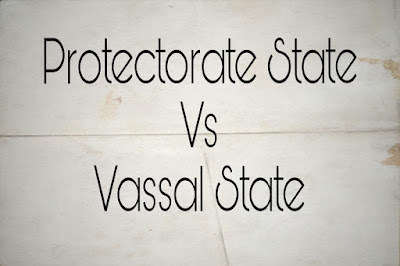A PIL is filed in the Delhi High Court by Mr.SANJJIIV KKUMAAR to declare Gender Specific Sections of IPC 375 & IPC 376 and The Criminal law(Amendment) Act 2013 as null, void and unconstitutional
A Bench of Acting Chief Justice Gita Mortal and Justice C Hari Shankar heard the petition before seeking the response of the centre in the case and issued notice to the Central Government for giving it's answer.
The Petitioner argued that:-
' If a male alleges that female raped him, he is not seen as a “Real Man” because the stereotypical patriarchal assumption of “men are superior and stronger to women” comes into the picture. The same “male domination” and the notion of patriarchy is, in fact, the very reason males do not come out of the closet to report rapes. Forman (1982) finds that about 90-95% of men who are raped do not report it. Therefore, men too like females are afraid of reporting rapes. Their masculinity is doubted upon; he is mocked and harassed by the society because he got “raped by female”. It is seen as his fault and weakness."
The Petitioner also tried to draw the attention of the Court that :-
"out of the 96 countries studied, 63 were found to have rape or sexual assault laws written in gender-neutral language, 27 had
rape laws that were completely gender-specific (i.e., the perpetrator was defined as male and the victim as female) and 6 had partly gender-neutral laws (the perpetrator was defined as male and the victims could be male or female) "
The Petitioner argued about the THE TYRANNY OF 12 O’CLOCK SYSTEM or THE MIDNIGHT ADULT SYSTEM :-
" the genesis of this writ petition goes back to the unfortunate, heartbreaking and gruesome incident of Ryan International School where a devilish wicked man tried to sexually disrobe the bodily integrity of a just 7 year old innocent brave child and when unable to do so brutally murdered
a young child
Abhimanyus of India’s are protected from Sexual Assault (POSCO Act) till they are 17 Years 364 Days 23 Hours 59 Minutes and 59 Seconds old.
The Abhimanyus, since childhood are being told that they are protected, just like their sisters, of any sort of Sexual Assault but the
moment clock ticks 12:00, and they turns 18, the Abhimanyu of India are being labeled as Male Adults and are robbed of their rights that they were having just one second before, for the only reason that they are not child anymore but now they are male."
The Petitioner contended the following grounds for declaring rape laws gender neutral:-
" 1. Hon’ble Supreme Court in Right to Privacy ruling has used the word “consent” 38 times. Consent and bodily integrity of each citizen are now fundamental rights and the cornerstone of the Privacy Ruling. Privacy now being a Fundamental Right has changed the contour and validity of some existing Acts and Cr.P.C/IPC and made them(or some sections of them) Null, Void and Unconstitutional.
2. The gender specific IPC 375 and IPC 375, read with Consent, Bodily Integrity(Article 21 Right to Privacy) of every citizen, doesn’t confer to Article 14 of Constitution requirement of “everyone is equal before law, that no one can claim special privileges and that all classes are equally subjected to the ordinary law of the land” and “equal protection of all alike in the same situation and under like circumstances” vis-à-vis treatment of Male and thus fails miserably/doesn’t stand Article 14 of Constitution test.
3. DOCTRINE OF PARI MATERIA says that “It is settled law that two statutes are said to be in pari materia with each other when they deal with the same subject-matter. The rationale behind this rule is based on the interpretative assumption that words employed in legislation are used in an
identical sense”. Privacy ruling has made gender specific present IPC 375 and IPC 376 null, void and unconstitutional as explained above and using Doctrine of Pari Materia, present IPC can be replaced by Gender Neutral IPC 375 and IPC 376 of Ordinance 2013.
4. In “Ordinance 2013”, IPC 375 and 376 were Gender Neutral with respect to Victim as well as Perpetrator of Crime and are truly Progressive and Forward Thinking in nature and they were law of the land at a point of time(For 58 Days) "
" 1. To keep happy the vested interest people and organization, Central Govt., through Parliament, choose to implement Gender Specific “Act 2013”, which was Criminal Amendment and inspite of law of the land prohibiting it, Parliament applied it Retrospectively[Ex Post Facto] from 3rdFebruary 2013[ “Act 2013” Chapter I 1(2) says “It shall be deemed to have come into force on the 3rd day of February, 2013”] which is barred by Article 20(1) Of Constitution of Indian read with Article 21 and 14 of Constitution
2. “Ordinance 2013” which was law of the land from 3rd February 2013 to 1st April 2013, that is 58 days, were Gender Neutral , namely Section 375 , 376, 354A, 354C, 354D of IPC, and applying “Act 2013”, which was Gender Specific pertaining to the above mentioned IPC Acts, retrospectively from 3rd February 2013, Govt effectively ordered to throw away All Gender Neutral Complaints/Cases which could have been
converted into FIRs or filed FIRs during the “Ordinance 2013” period, thereby violating Article 21 of Constitution of India as No Gender Neutral Cases could be filed(Petitioner never heard any Sexual Assault Case of Man in any New papers which means that Closure Report were filed in those cases or police/court never registered it or such complaint cases were
dismissed under Section 203 of CrPC) and Citizens were deprived of their Fundamental Rights pertaining to above mentioned IPCs
3. IPC Section376 Clause 2, contains “shall be punished with rigorous imprisonment for a term which shall not be less than ten years, but which may extend to imprisonment for life, “which shall mean imprisonment for the remainder of that person’s natural life”, and shall also be liable to fine.Please notice the term “which shall mean imprisonment for the remainder of that person’s natural life”. This was not present in “Ordinance 2013”Article 20(1) of Constitution of India says that a person cannot “be subjected to a penalty greater than that which might have been inflicted under the law in force at the time of the commission of the offence”
4. For IPC 375 offence committed during those 58 days starting from 3rd February 2013 to 1st April 2013 couldn’t have been subjected to “remainder of that persons natural life” sentence but applying “Act 2013” Retrospectively or Ex Post Facto means that “person would be subjected to harsher punishment”. Hence “Act 2013” being ultra vires Article 21(1) and hence would be deemed Null, Void and Unconstitutional by Article 13(2) of
Constitution of India.
5. “Act 2013” also changes Section 114A of Indian Evidence Act, thereby making punishment easier under Section 376 of IPC. Hence ultra vires Article 20(1) of Constitution of India and hence will deem to be Void, Null, Unconstitutional by Article 13(2) of Constitution of India."
The Petitioner also submitted before the Court some incidents where "MEN RAPED(FORCED TO PENETRATE) BY WOMEN" :-
"1. A news publish in SUN newspaper UK titled “Three women ‘raped man, 23, for THREE days’ after kidnapping man in a taxi and force-feeding him energy drinks in South Africa”.
2. News published in Metro UK News, titled Woman charged with raping male taxi driver at knifepoint
3. News published in Mirror UK, titled Shia LaBeouf claims he was RAPED by a woman on Valentine's Day during #IAMSORRY art
show, shows that Famous Hollywood Actor Shia LaBeouf who worked in Block Buster movie like Transformers, Fury, Lawless can also be subject to Male Rape by Female.
4. News published in Slate Magazine, titled “A new study reveals that men are sexually assaulted almost as often as women” citing National CrimeVictimization Survey (NCVS), from The Bureau of Justice Statistics' (BJS), USA is an eye opener. "
Based on the above the Petitioner prayed that the Court issue directions:-
"1. To declare Gender Specific Sections of IPC 375 & IPC 376 null, void and.unconstitutional as per Article 13(2) of Indian Constitution as in current form IPC 375 & 376 are ultra-vires Articles 21 and 14 of Constitution of India.
2. To replace the IPC 375 and IPC 375 with Gender Neutral IPC 375 and IPC 376 of The Criminal law(amendment) Ordinance 2013 dated 3nd February 2013, No 3 of 2013, published in The Gazette of India.
3. To declare The Criminal law(Amendment) Act 2013 dated 2nd April 2013, No 13 of 2013, published in The Gazette of India (Extraordinary), null, void and unconstitutional as per Article 13(2) of Constitution of India"










